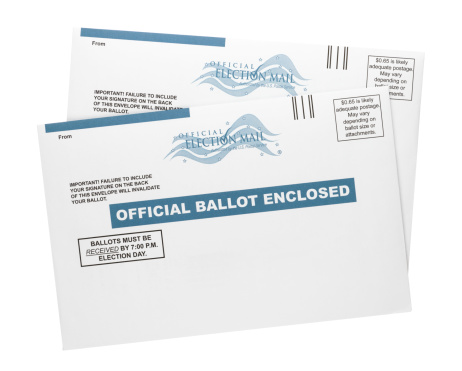With the election now just over four months away, on Monday President Trump launched a new assault on voting by mail.
Bellowing in an all-caps Twitter post, Trump declared that the U.S. faces a “RIGGED 2020 ELECTION,” warned that “MILLIONS OF MAIL-IN BALLOTS WILL BE PRINTED BY FOREIGN COUNTRIES” and called it “THE SCANDAL OF OUR TIMES!”
Clearly, he fears making it easier for Americans to vote could deny him reelection, even though he voted by mail himself in a Florida primary earlier this year.
Trump seems to have embraced what Business Insider calls “a highly implausible and dubious theory that foreign adversaries will try to interfere in the 2020 election by making and sending out ‘counterfeit ballots’ to voters.”
But let’s take this claim about the threat of phony mail-in ballots seriously and look at the facts.
Attorney General Bill Barr laid it out in an interview with the New York Times Magazine published June 1.
Barr claimed that “”there are a number of foreign countries that could easily make counterfeit ballots, put names on them, send them in. And it’d be very hard to sort out what’s happening.”
Not so, writes Philip Bump in the Washington Post:
“Writing a candidate’s name on a piece of paper and sticking it in a box works fine for electing a fifth-grade class president, but electing a member of Congress or an actual president should understandably be a bit more complicated. So states developed different but parallel ways of matching votes to voters, making elections much more secure.
“So secure, in fact, that fraud by now is rare.”
Bump calls Trump’s insistence that voting by mail threatens the election’s integrity “a nifty little argument, pivoting off concerns about foreign interference introduced in 2016 — thanks to Russia’s interference on his own behalf — to suggest that foreign countries would tip the scales by stuffing ballot boxes.”
But it’s harder to create a counterfeit ballot than it might seem — a lot harder.
On MSN, Business Insider explains why:
“First, election administration in the United States is highly decentralized down to the state and local level, meaning there is no single national ballot a foreign adversary could mass print out and mail to voters.”
Ballots sent out by states and cities use very specific designs, including the order of offices up for election, specific codes used to track the ballot, even the kind of paper, the ink, and type of font used for printing.
As for those “specific codes,” they usually include a barcode unique to each voter, along with codes describing the ballot type, precinct number and a voter ID number — all of which lets election officials easily spot a counterfeit ballot.
Finally, as Michael Li, an election lawyer for the Brennan Center for Justice pointed out in a tweet this month: “Bless Bill Barr’s heart — this just couldn’t happen.”
Sending out mass fake ballots to even one precinct in one town, Li wrote, “would require a foreign actor to perfectly reprint both the ballot itself … [and] the envelope it comes in,” plus two return envelopes, all of which must go to each individual voter, who must return them with a signature.



